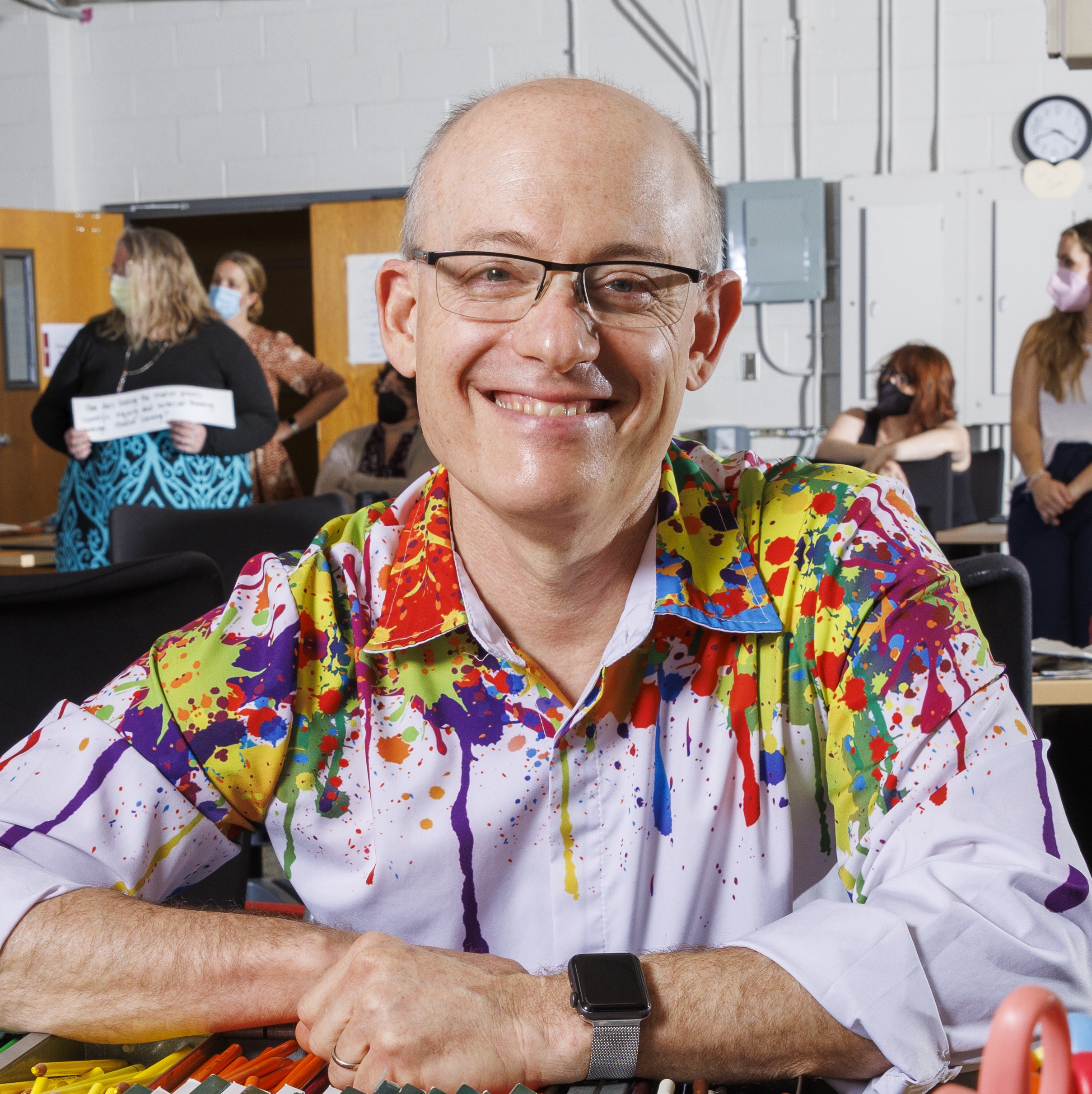
Research papers are a pairing of two 18 minute presentations followed by 18 minutes of Discussion led by a Discussant, with remaining time for Q & A.
This is presentation 1 of 2, scroll down to see more details.
Other presentations in this group:


This presentation comes from a critical teacher education perspective that emphasizes that all students should be encouraged to find pathways to authentic learning with special care for populations underserved in STEM education (Daqrling-Hammond, 2004; Hammond, 2014). This calls for careful modeling and discussion of curricular design for preservice teachers who plan for student voices and authentic learning opportunities.
This paper uses a sequential mixed methods analysis. We will present a quantitative analysis of self-efficacy to teach STEAM integrated lessons for 10 semesters of continuously improving teacher education practice. Then using qualitative textual analysis, we examine the change in PSTs STEAM identities.
Finally, we use the program as a case study to examine the processes that allow continuous development and improvement.
We will share a set of empirical recommendations for STEM teacher educators to better prepare elementary preservice teachers (PST) to understand, conceptualize, and implement integrated STEAM instruction within their future classrooms. The design of the integrated STEAM integration is based on earlier NSF supported work on mathematics content and pedagogy integration (Heaton et. al., 2006) as well as STEM integration (Authors, in print). With the adoption of the NGSS (NGSS Lead States, 2013) and the rapid advancements in science and technology, there has been an increased focus on preparing high-quality elementary science teachers with a deeper understanding of STEM and STEM-related careers (National Research Council, NRC, 2012). Reform efforts include rethinking ways in which PSTs are currently prepared within the teacher preparation programs (Darling-Hammond & Bransford, 2005). In response to the challenge, we engaged in an iterative process of redesigning STEAM integration throughout the program, including:
Challenging pre-existing beliefs and status quo situated within a discipline,
Reaching common ground with a shared understanding of STEAM integration as a dynamic process,
Strategizing the flow of STEAM learning across various courses within the program,
Pilot implementation of the curriculum,
Reflection and revision.
Within the STEAM integrated coursework, preservice teachers are engaged in learning STEAM content utilizing the science and engineering practices and crosscutting concepts (NGSS, 2013) and inquiry, design-based learning, and problem-solving skills to solve real-world problems. PSTs complete common projects through their STEAM methods courses. First, using a written reflective approach, PSTs reflect on their prior STEAM learning experiences and share their current perceptions of STEM teaching and learning. Second, PSTs develop integrated STEM activities utilizing robotics and other technology such as virtual reality, Spheros, Dash bots, and 3D printing, rooted in mathematics, science, engineering, and technology standards (ISTE, Fingal, 2018; NGSS Lead States, 2013; NCTM, 2014; Lucas & Hanson, 2016). Third, the STEM growth project helps PSTs synthesize their ideas around STEAM integration using visuals, pictures, and texts as representations to highlight their developing understanding and knowledge about STEAM teaching and learning.
Finally, we will provide evidence from preservice teachers’ surveys and written reflections on how the multiple STEM engagements contribute toward PSTs’ understanding of STEAM integration in culturally responsive ways their developing STEAM identities. We will end the chapter with recommendations for future teacher educators to restructure their elementary education programs to shape their STEAM identities. We will also discuss the successes and challenges associated with curricular changes and how the roles and responsibilities were negotiated amongst our team in order to ensure the redesign and seamless integration of science, mathematics, engineering, art, and technology.
The projects (STEAM-themed pathways) that run across various courses target the development of preservice elementary teachers’ STEAM identities and culturally responsive practices showing how a carefully designed, constantly improving teacher education program can increase STEAM equity practices in Preservice teachers.
Darling-Hammond, L., & Bransford, J. (Eds.). (2007). Preparing teachers for a changing world: What teachers should learn and be able to do. John Wiley & Sons.
Fingal, D. (Ed.). (2018). Chapter 1- ISTE Standards. In Edtech for the K-12 classroom: ISTE readings on how, when and why to use technology (pp. 1-19). Portland, OR: International Society for Technology in Education.
Lucas, B., & Hanson, J. (2016). Thinking like an engineer: Using engineering habits of mind and signature pedagogies to redesign engineering education.
National Council of Teachers of Mathematics (NCTM). (2014). Principles to actions: Ensuring
mathematical success for all.
National Research Council. (2012). Education for life and work: Developing transferable knowledge and skills in the 21st century. Washington, DC: National Academies Press.
NGSS Lead States (2013). Next Generation Science Standards: For states, by states. Washington,
DC: The National Academies Press
Heaton, R., Lewis, J., Edwards, P., Jacobson, B., McGowan, T., Miller, J., Papick, I., Smith, W., Stroup, W. Professor. (2006). Nebraska MATH. National Science Foundation grant.